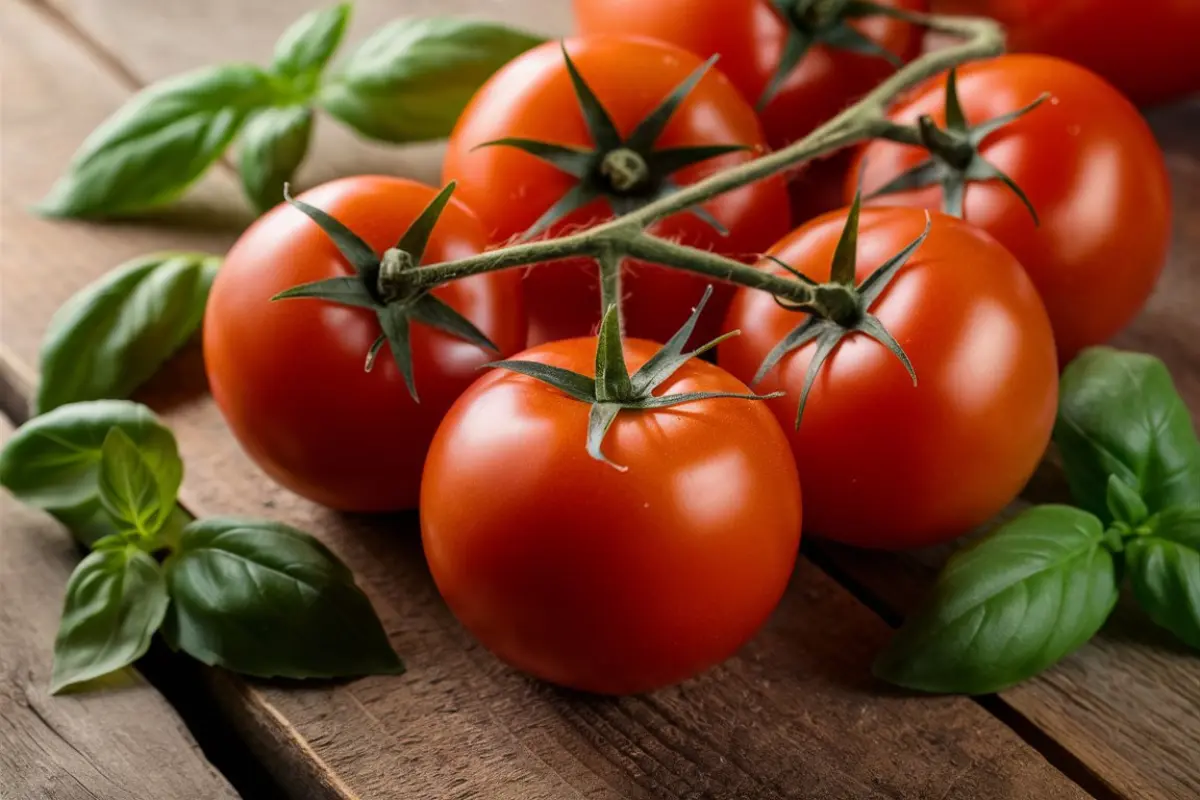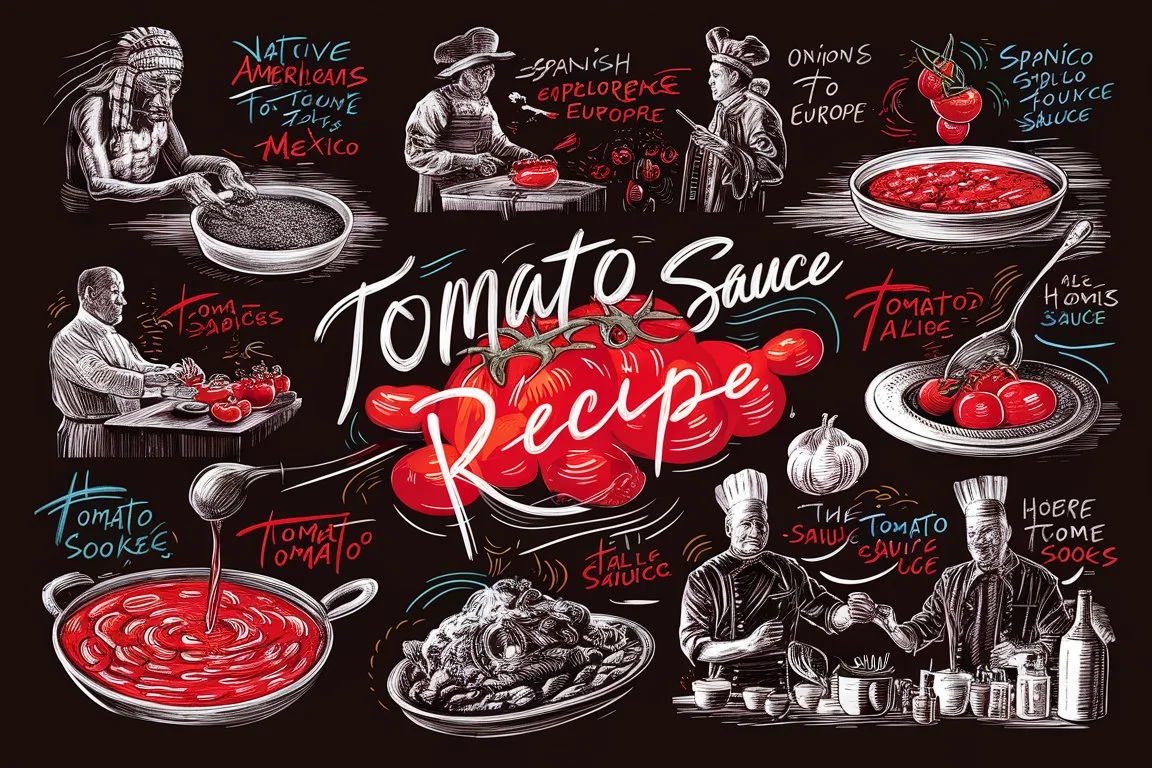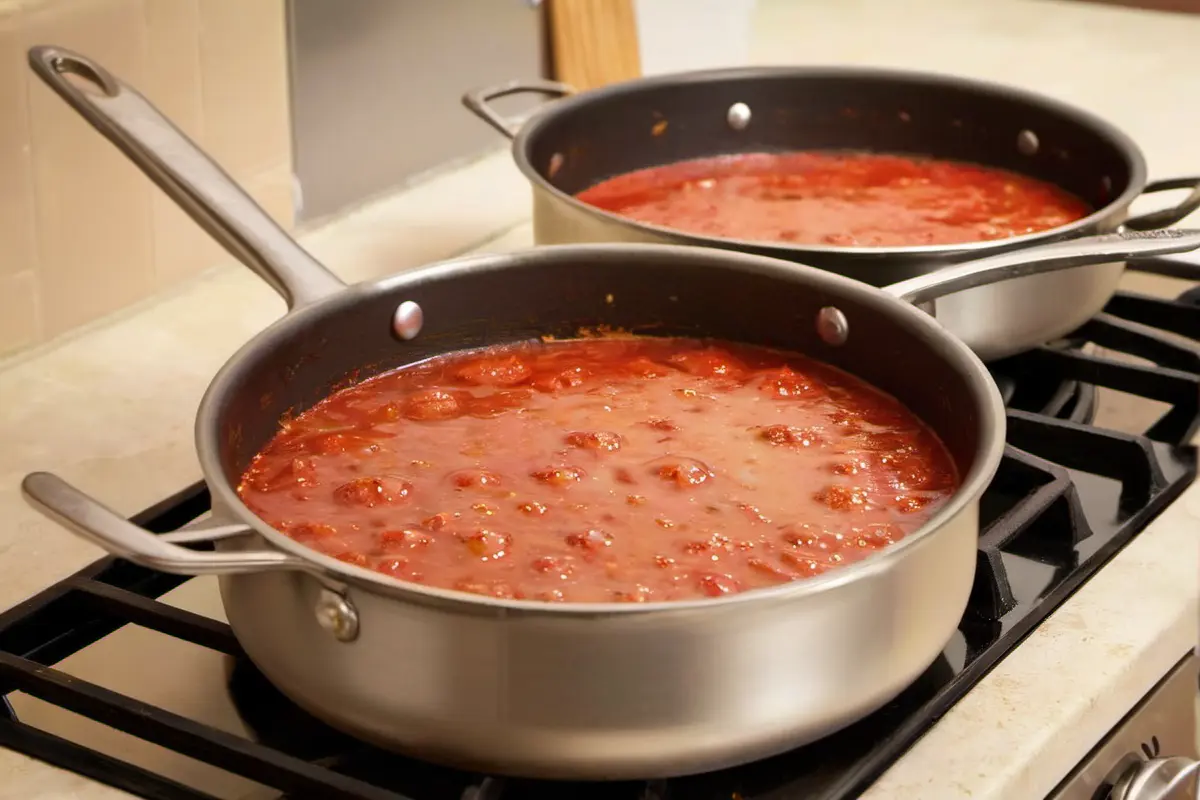When crafting the perfect pizza, every ingredient counts, but none quite so much as the sauce that marries all the components together. Selecting the best tomato for pizza sauce isn’t just a matter of taste; it’s about texture, acidity, and the tomato’s ability to blend with other ingredients to create a harmonious flavor. This article delves into the ideal tomatoes for your pizza sauce, ensuring that every slice is as delightful as the last. So, let’s explore the top tomato varieties that can elevate your homemade pizza from good to unforgettable.
Introduction to Tomatoes for Pizza Sauce
Overview of Tomato Importance in Pizza Sauce
Indeed, a pizza is only as good as its sauce. The best tomato for pizza sauce enhances the pizza’s overall flavor and can make or break your culinary creation. Tomatoes serve as the backbone of pizza sauce, providing not just essential acidity and sweetness but also a robust texture that clings to the dough and melds with the cheese.
Variety Matters: Selecting the Right Tomatoes
Selecting the right tomato is crucial. Not all tomatoes are created equal—some are too watery, others too acidic. For pizza sauce, you want tomatoes that offer a balance, with a rich flavor and a thick consistency. This is why the choice of tomato can significantly influence the taste and quality of your pizza sauce. As we move forward, we’ll explore the specific varieties that meet these criteria and how to choose them, whether fresh or canned.
Best Tomato Varieties for Pizza Sauce
San Marzano Tomatoes: The Gold Standard
San Marzano tomatoes are often hailed as the pinnacle for pizza sauce. Originating from the rich volcanic soils near Naples, Italy, these tomatoes are cherished for their balanced flavor — mildly sweet with a slight tang. Learn more about why these tomatoes are so special in our detailed exploration of San Marzano tomatoes. The flesh is dense and has fewer seeds, which contributes to a thicker, more concentrated sauce. When you’re aiming for an authentic Italian pizza experience, San Marzano tomatoes are your best bet.
Plum Tomatoes: A Versatile Alternative
If San Marzano tomatoes are out of reach, plum tomatoes make a worthy substitute. Known also as Roma tomatoes, they are widely available and highly regarded by chefs for sauce-making. Their thick, meaty flesh cooks down into a velvety sauce with a rich tomato flavor that complements any pizza topping. Plum tomatoes might not have the unique sweetness of San Marzanos, but their accessibility and consistency make them a staple in kitchens around the world.
In the next section, we’ll dive into how to select the best canned tomatoes when fresh ones aren’t an option, and why sometimes, they might even be the better choice.
Choosing Canned Tomatoes for Convenience
Benefits of Canned Tomatoes
Sometimes, the best tomato for pizza sauce might just come from a can. Canned tomatoes offer consistency in flavor and texture, which can be particularly useful outside of the tomato growing season. They’re also a great time-saver, as they are already peeled and prepped for cooking, allowing you to focus more on perfecting your sauce’s seasoning. For a broader perspective on choosing and using canned tomatoes in cooking, read this insightful article on Fontana Forni USA.
Top Picks for Canned Tomato Brands
When shopping for canned tomatoes, quality is key. Here are a few brands that stand out for their exceptional taste and texture, suitable for making a robust pizza sauce:
Bianco DiNapoli Organic Tomatoes
Bianco DiNapoli tomatoes are a top choice among gourmet chefs and home cooks alike. These organic tomatoes are grown in California, and they pack a flavor that is both sweet and rich, perfect for a sauce that needs to impress. The addition of organic basil in the cans also infuses an extra layer of flavor, making your pizza sauce distinctively aromatic.
Cento Plum Tomatoes
For those looking for reliability and flavor, Cento plum tomatoes are a go-to. Their well-balanced acidity and sweetness make them ideal for pizza sauces that require a thicker consistency. Plus, their minimal seed content ensures a smoother sauce.
San Marzano Whole (Canned)
If fresh San Marzano tomatoes are unavailable, their canned counterparts can still elevate your pizza sauce. Sourced from Italy, these tomatoes are preserved with their flavors intact, ensuring that your sauce benefits from the authentic San Marzano taste.
In the upcoming section, we’ll explore how to combine these tomatoes with the right ingredients to create the perfect pizza sauce.

Making the Perfect Pizza Sauce
Essential Ingredients for a Standout Sauce
Creating the ultimate pizza sauce goes beyond just tomatoes. It involves a symphony of ingredients that each add depth and complexity. Discover more about crafting the perfect blend in our comprehensive guide to making authentic pizza sauce. Here’s what you’ll need to gather:
- Fresh basil for a touch of herby sweetness
- Olive oil for richness and smoothness
- Garlic for a pungent kick
- Salt and a pinch of sugar to balance the acidity
- Optionally, a sprinkle of red pepper flakes for a bit of heat
Step-by-Step Sauce Preparation
Here’s how to bring these ingredients together to make a pizza sauce that will have everyone asking for seconds:
1. Begin with the Basics
A splash of olive oil into a pot at medium-low temperature. Add finely minced garlic and sauté just until fragrant—about one minute. This base will infuse your sauce with a robust garlic flavor that’s iconic in Italian cooking.
2. Add the Tomatoes
Next, pour in your choice of crushed tomatoes, whether they’re hand-crushed San Marzano or plum tomatoes. If you’re using canned tomatoes, be sure to check for any added seasonings or herbs in the can, as this could influence your additions.
3. Season Perfectly
Stir in a generous pinch of salt, a little sugar to cut the tartness, and fresh basil leaves. Allow the sauce to simmer gently, letting the flavors meld together. If you like a bit of spice, this is the perfect time to add some red pepper flakes.
4. Simmer to Perfection
Let the sauce simmer for at least 20 to 30 minutes, stirring occasionally. The goal is to achieve a thick consistency that will spread beautifully over your pizza dough without running off.
5. Final Adjustments
Check the sauce for taste and alter the seasoning if needed. Sometimes, a little extra pinch of salt or a few more basil leaves can make all the difference.
By following these steps, you’re not just making a sauce; you’re crafting an experience that enhances every bite of your pizza. Next, we’ll look into additional tips to elevate your sauce even further.

Additional Tips and Techniques
Fresh vs. Canned Tomatoes: Making the Right Choice
Whether you opt for fresh or canned tomatoes often depends on the season and your specific needs. Fresh tomatoes are great when they’re in season, offering vibrant flavor and texture. However, canned tomatoes can provide a more consistent taste year-round and are often easier to work with since they’re already processed to the perfect consistency for sauce-making.
Secrets to Enhancing Sauce Flavor
1. Experiment with Herbs
Besides basil, consider adding oregano, thyme, or marjoram to your sauce. Each herb brings its unique flavor profile that can beautifully complement the natural taste of the tomatoes.
2. Use Quality Olive Oil
A good quality olive oil can make a significant difference in your sauce. It adds a layer of richness and helps to bind the sauce together, enhancing its spreadability on the pizza dough.
3. Consider a Touch of Wine
For an adult twist, a splash of red wine in your pizza sauce can deepen the flavors. The wine’s acidity and fruitiness can elevate the natural sweetness of the tomatoes.
4. Simmer Slowly
Allowing your sauce to simmer slowly and gently can significantly enhance its flavor and texture. A slow simmer helps the flavors to meld better and reduces the sauce to the perfect thickness.
5. Sweeten with Care
While a pinch of sugar can help balance the acidity of the tomatoes, be cautious. Too much can overpower the natural flavors. Always add gradually and taste as you go.
These tips are designed to help you fine-tune your sauce to your taste preferences and ensure that every pizza you make is a delight. Next, we will wrap up with some frequently asked questions to help clarify any remaining queries about making the perfect pizza sauce.
Keeping Your Sauce Fresh: Best Practices for Storage and Reuse
Preserving the freshness and flavor of your homemade pizza sauce is crucial for maintaining its quality over time. Here’s how to ensure your sauce stays as delicious as the day you made it, whether you’re storing it short-term or for future pizza nights.
Short-Term Storage
For short-term storage, cool your pizza sauce to room temperature after cooking to prevent condensation and bacterial growth. Transfer the sauce to an airtight container, and then refrigerate. Properly stored, your homemade pizza sauce can last in the refrigerator for up to 5-7 days. Always use a clean spoon to scoop out sauce to avoid contamination.
Freezing for Longevity
Freezing pizza sauce is an excellent way to extend its shelf life while preserving its taste and nutritional value. Portion the sauce into usable amounts—perhaps enough for one or two pizzas—to avoid having to thaw more sauce than you need at one time. Use freezer bags or airtight containers designed for freezer storage to prevent freezer burn. Label each portion with the date, and store it for up to six months. When you’re ready to use the sauce, thaw it overnight in the refrigerator or gently warm it in a saucepan over low heat.
Revitalizing Frozen or Refrigerated Sauce
When you’re ready to use refrigerated or thawed sauce, consider freshening it up with a few additional ingredients. A splash of olive oil, a pinch of fresh herbs, or a little garlic can revive the flavors and bring back some of the sauce’s original zest. If the sauce has thickened too much in storage, a small amount of water or tomato juice can be mixed in to reach the desired consistency.
Safe Handling Practices
Always practice safe handling to prevent foodborne illnesses. Never leave pizza sauce at room temperature for more than 2 hours, and if using frozen sauce, ensure it’s thoroughly thawed before using it to prevent uneven cooking.
By following these best practices for storing and handling your pizza sauce, you can enjoy vibrant, flavorful toppings every time you bake a pizza at home. This way, every pizza night can be a gourmet experience with minimal effort, maximizing both taste and convenience.
Conclusion
Crafting the perfect pizza sauce is an art that balances flavor, texture, and the personal touch of the cook. From selecting the best tomato for pizza sauce to fine-tuning the seasoning and simmering it to perfection, each step contributes to the final taste of your pizza. Whether you opt for the celebrated San Marzano tomatoes or the readily available plum tomatoes, understanding their characteristics and how they interact with other ingredients is key to achieving the ultimate sauce.
Remember, the best pizza isn’t just about the sauce; it’s about how all the elements of the pizza combine to create a harmonious and satisfying eating experience. So, experiment with different tomatoes, tweak the recipe to your liking, and always aim for quality ingredients.
In your quest for the perfect pizza sauce, keep in mind that practice makes perfect. Each batch of sauce is an opportunity to refine your skills and palate. So fire up your oven, gather your ingredients, and start crafting a pizza sauce that could rival any Italian pizzeria. Enjoy the process, and most important of all, enjoy the tasty payoff!
With these insights and tips, you’re well-equipped to create a pizza sauce that will elevate your homemade pizzas to new culinary heights. Happy cooking, and even happier eating!
FAQs
What are the benefits of using San Marzano tomatoes for pizza sauce?
San Marzano tomatoes are celebrated for their sweet flavor and low acidity, making them the preferred choice for authentic Italian pizza sauces. Their thick flesh and few seeds result in a rich, velvety sauce that spreads evenly over the pizza base.
Can I substitute plum tomatoes if San Marzano tomatoes aren’t available?
Absolutely! Plum tomatoes are an excellent alternative to San Marzano tomatoes. They are readily available and known for their robust flavor and firm texture, which makes them ideal for cooking down into a hearty sauce.
How can I store homemade pizza sauce?
Pizza sauce made from scratch can be kept inside an airtight container within fridge for up to one week. For longer storage, you can freeze the sauce in small batches. Use freezer-safe containers or bags, and the sauce can last for several months, ready to be thawed and used for a quick pizza night.
Does the type of tomato really make a difference in pizza sauce?
Yes, the type of tomato can significantly affect the flavor, texture, and overall quality of the pizza sauce. Different tomatoes bring varying levels of sweetness, acidity, and moisture to the sauce, influencing how well it complements other toppings.
What’s the best way to enhance the flavor of canned tomatoes?
To enhance the flavor of canned tomatoes, consider adding fresh herbs, a pinch of salt, and a little sugar to balance the acidity. Cooking the tomatoes slowly and allowing them to simmer can also help concentrate the flavors, making the sauce richer and more robust.
By addressing these common questions, you can ensure that your pizza sauce is not only delicious but also perfectly suited to your tastes and preferences. With the right tomatoes and techniques, every pizza you make can be a masterpiece.

